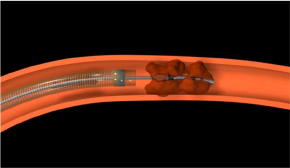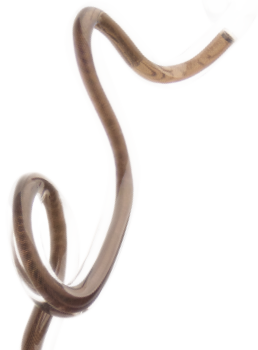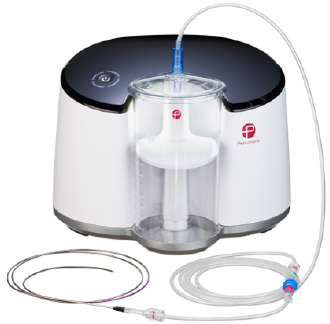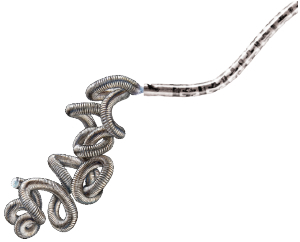
Our Strength
Stroke
Cerebral Stroke
A cerebral stroke is a disease which is caused by ruptured or occluded blood vessels of the brain. There are two types of cerebral stroke classified by causes: "Occluded brain blood vessel (cerebral infarction)" and "Ruptured brain blood vessel (subarachnoid hemorrhage or cerebral hemorrhage)".
An occurrence of any type of a cerebral stroke is linked to very high mortality rates and severe cases. Hence the treatments for stroke patients (particularly endovascular treatments) are of ciritcal importance and currently drawing a great deal of public attention.
Acute Cerebral Infarction
A cerebral infarction is a disease where the brain cells die due to an occluded brain blood vessel that leads to the absence of blood flow. Among the types of cerebral infarction, atrial fibrillation-related cardiogenic embolism has a higher mortality rate once the symptoms develop, and leaves many survived patients neurologically impaired.
Minimally Invasive Treatment for Acute Cerebral Infarction
An endovascular treatment removes blood clots and restores blood flow by inserting a catheter into large major cerebral blood vessels including the internal carotid artery, middle cerebral artery and basilar artery.
The distinctive characteristics of this endovascular treatment is that patient’s prognosis depends largely on ‘onset-to-recanalization’ (need to check this) time.
As positive results of international clinical trials of endovascular treatments for acute cerebral infarction are increasing, the number of endovascular treatments for acuter cerebral infarction is increasing not only in Japan but also around the world.

Our Approach to Acute Cerebral Infarction
In June 2011, we were the second company in Japan to obtain regulatory approval for our thrombectomy device. It has been very successful and has used in a large number of cases.
Since the launch we have continued to work on the device implementing numerous improvements to the technology.


Cerebral Aneurysm
A cerebral aneurysm refers to a part of the cerebral blood vessel when it swells and becomes like a sac. An aneurysm that has not bursted (not bleeding) is called unruptured aneurysm and an aneurysm that has bursted (bleeding) is called ruptured aneurysm.
While a small cerebral aneurysm is less likely to rupture, once an aneurysm (regardless of its size) ruptures, it results in so-called subarachnoid hemorrhage and significantly worsens a patient's prognosis.
Both types of cerebral aneurysms are very problematic and require treatment.
Minimally Invasive Treatment for Cerebral Aneurysm
There are two types of popular treatments for cerebral aneurysm whether ruptured or unruptured: "Clipping with craniotomy" and "Endovascular embolization".
Each treatment has its advantages and disadvantages, but appropriate treatment is given after taking various factors, such as lesion status and patient age, into consideration.
Our Approach to Cerebral Aneurysm
Embolization coil
Our embolic coils for intracranial aneurysms have various features.
For example, there are wide range of size and configuration available to provide a solution for any type of aneurysms. The detachment system enables the procedure to be undone and coils to be repositioned. Even when a coil is once placed in the aneurysm, it can be retrieved out of patient’s body, as long as it’s not yet detached. Furthermore, due to our unique design of the detachment system, the coils can detach instantly which ensures safe treatment of intracranial aneurysms.

Microcatheter
Implanting coils in a cerebral aneurysm is always conducted through microcatheter.
Leveraging our domestic manufacturing system, we have designed our microcatheters to meet the needs of Japanese physicians through strong collaboration, and are now highly acclaimed.

